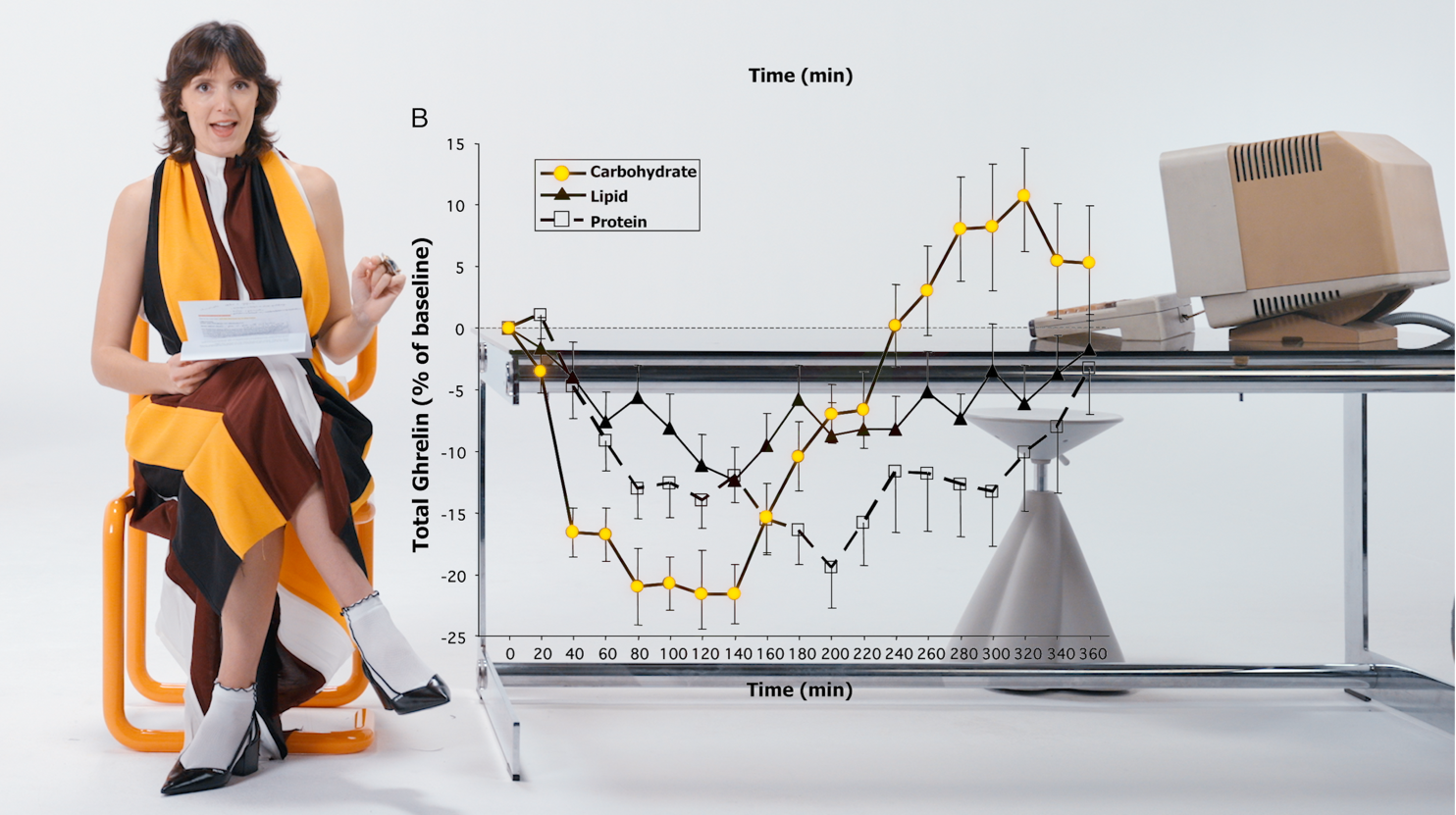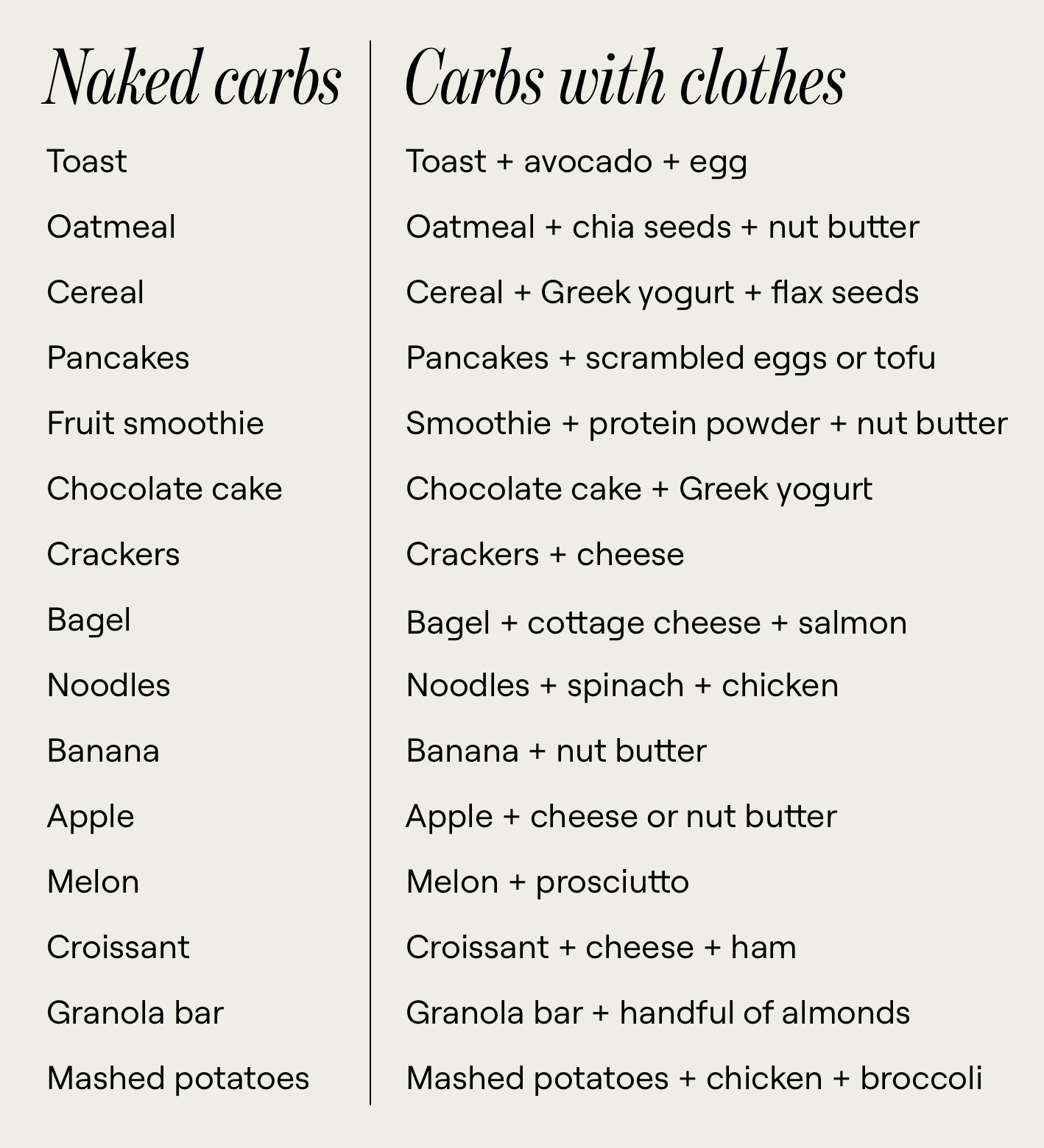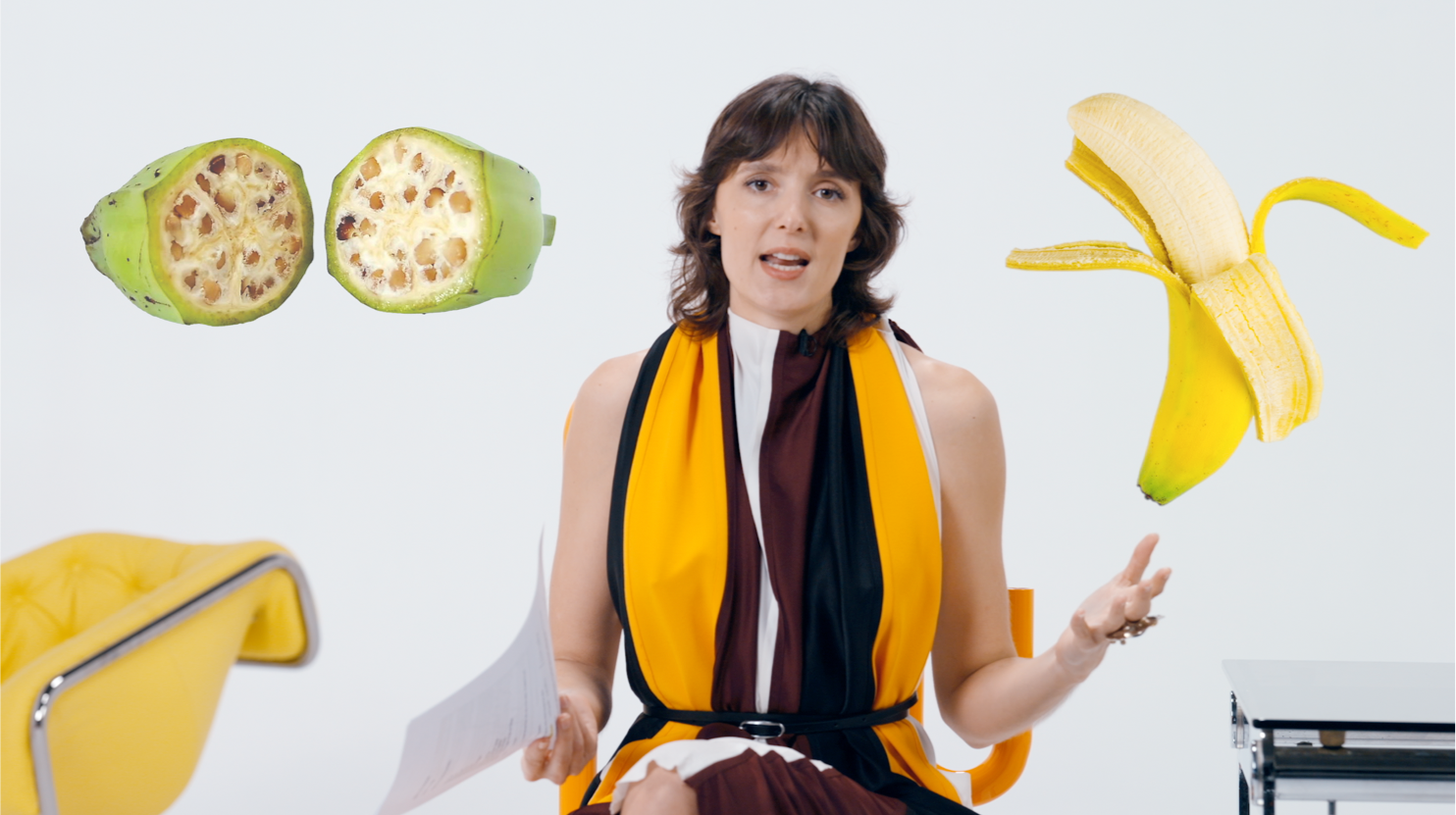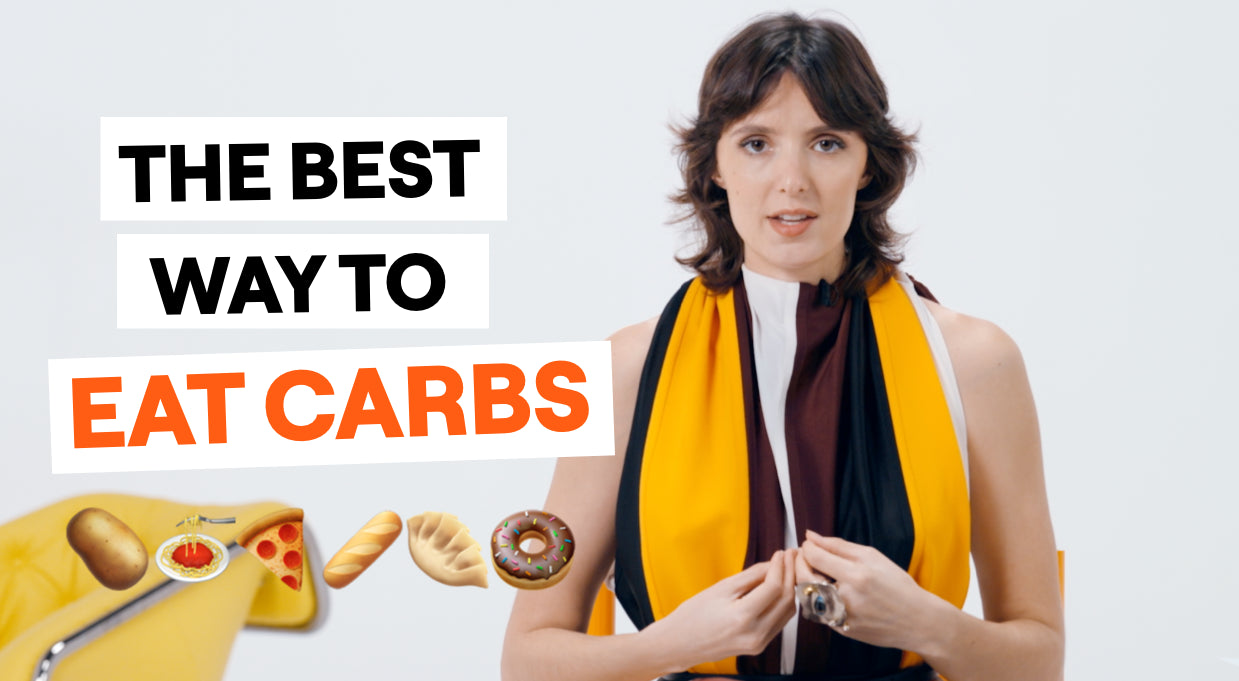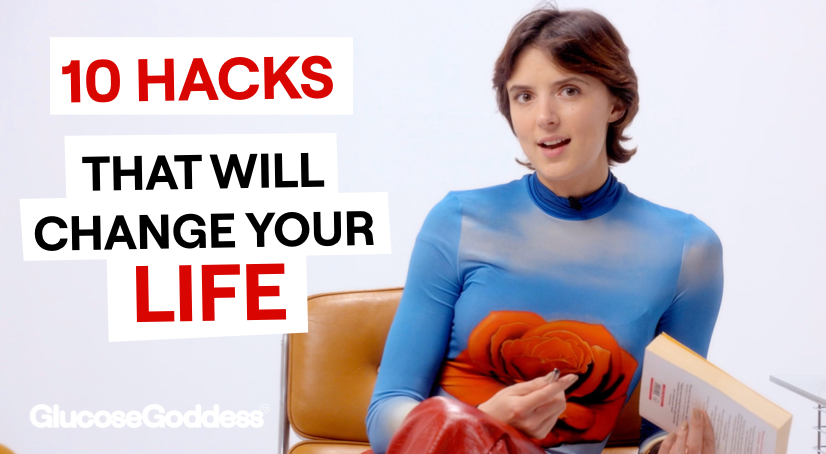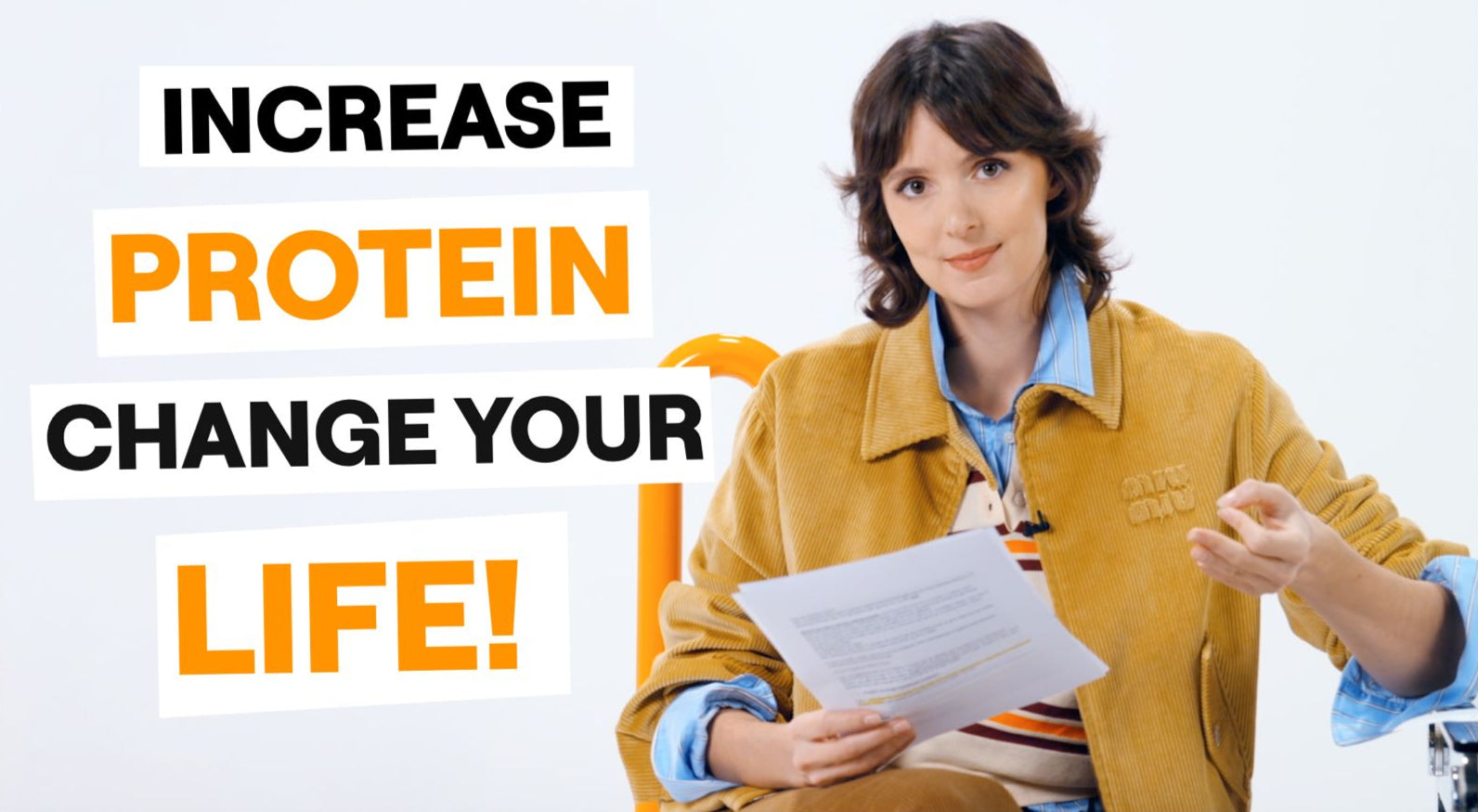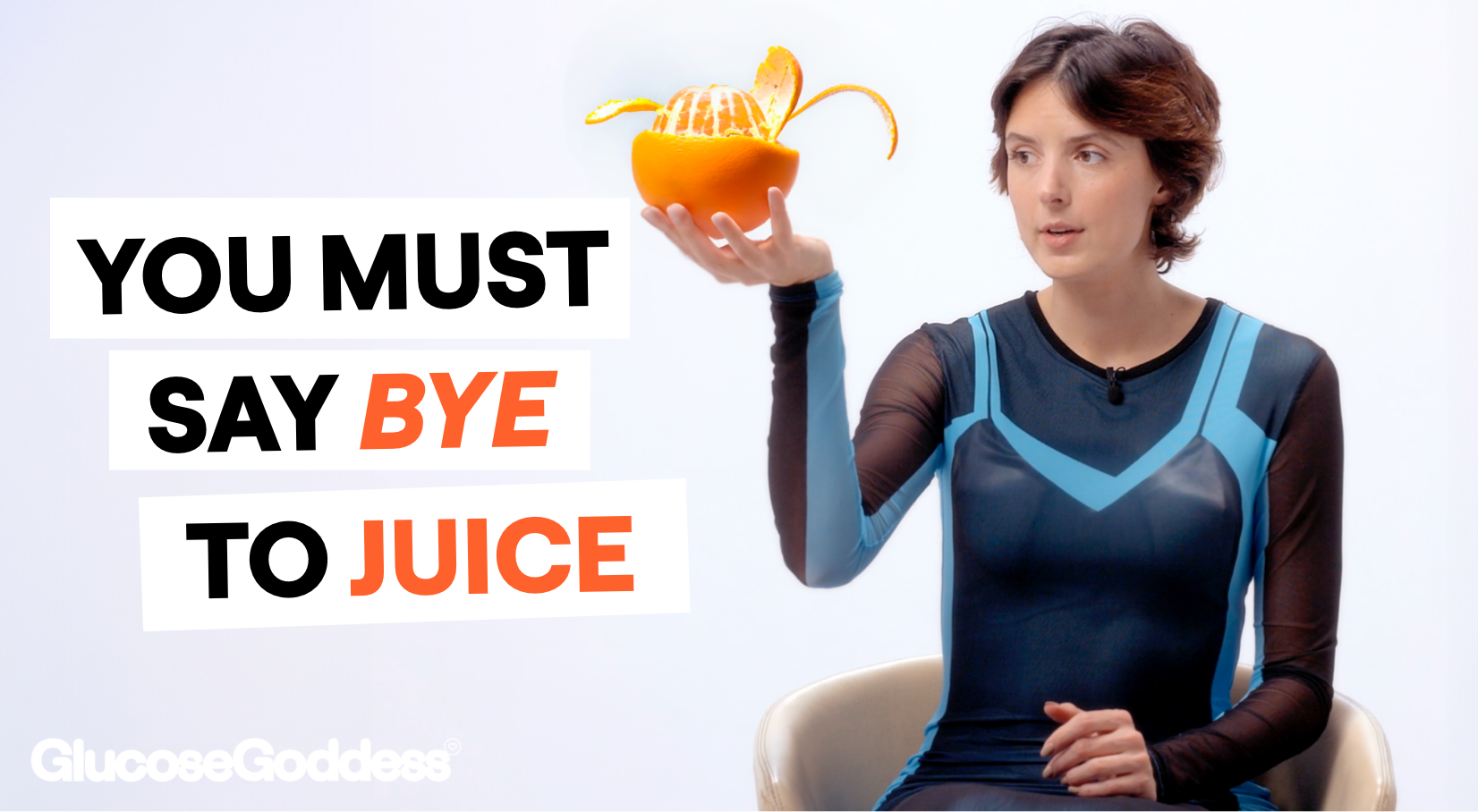SCIENCE EPISODE
Clothes on Carbs: The Science of Smart Food Pairing
So if you ever eat something and then two hours later you feel super, super hungry, it could be because you had naked carbs and, as a result, your ghrelin—your hunger hormone—is doing this curve.
Hello angels, and welcome to the Glucose Goddess Show! I'm Jessie Inchauspé, I'm a biochemist, and I'm obsessed with food, health, science, and teaching you science.
Today we're going to talk about something that might sound a little strange: it's called “putting clothing on your carbs.” If you're like, “What the heck is Jessie talking about?”, let me show you some examples.
I'm going to show you a few different traditional food combinations, and I want you to think about what they all have in common: rice and beans; melon and ham; pasta and cheese; bread with olive oil; grapes and cheese; tacos with meat; naan and curry; porridge with nuts; pizza (dough with cheese on top and other things). All these combinations have one source of carbs and, importantly, a source of protein, fat, or fiber. This protein, fat, or fiber is combined with the carbs—that is “putting clothing on your carbs.”
Now let's dig in. When we eat carbs on their own—for example, if we ate this pot of noodles or this rice cake on their own—that means eating these carbs naked. Naked carbs are essentially 100% glucose because carbs turn to glucose when we digest them. As a result, when noodles or a rice cake arrive naked, the glucose in them arrives really quickly in the bloodstream, creating a big glucose spike. Our body wants to get rid of big spikes because they're damaging on multiple levels (inflammation, aging via glycation, excess insulin release, hormonal effects). Your body then plays a frantic game of Tetris, trying to grab incoming glucose molecules and put them away before they stack too high and cause damage. What happens if we add something to these naked carbs? By adding sources of protein, fats, and fiber, the carbs now have clothing. When you eat carbs with clothing, they create a smaller glucose spike. Example: noodles on their own versus noodles with spinach and chicken—the second spike is much smaller. Adding spinach (fiber) and chicken (protein) reduces the spike from the noodles. Another example: a rice cake on its own versus a rice cake with nut butter—the spike is much smaller when we add protein and fat from the nut butter. What’s going on? When your body receives the rice cake with nut butter, instead of glucose from the rice cake rushing into the blood, the proteins and fats in the nut butter slow down its arrival; your body also has to digest and move the nut butter, so glucose trickles in more slowly. Same with noodles: you’re not reducing the amount of noodles (or of rice cake), but because other foods are present, you reduce the speed at which glucose arrives in the bloodstream. As a result, your body doesn't have to scramble; glucose arrives more slowly and over a longer period—much healthier.
Clothing on carbs not only makes many dishes tastier, it also reduces their glucose spike. When we reduce a spike, we reduce inflammation, reduce glycation (aging), and reduce excessive insulin release (which over time contributes to insulin resistance and type 2 diabetes). Also, every spike is followed by a dip, and the bigger the spike, the bigger the dip; that dip can lead to excessive hunger, cravings, and fatigue. If you’ve been eating naked carbs all the time and don’t feel well, “clothing on carbs” might be a great solution.
I keep this hack in mind on the go: for every meal, I make sure I’m never having my carbs naked, because that makes me feel lousy. At a friend’s house with a brownie (carbs)? Ask for some Greek yogurt (protein and fat) to put clothing on that brownie. At a work breakfast with bagels? Add salmon or avocado so the bagel isn’t a naked carb.
If you’re confused about proteins, fats, fibers, starches, etc., check the PDF in the episode description: my Master Food Classification List shows which foods are starches and sugars (carbs you should not eat naked) and which are proteins, fats, and fibers (the clothing you should add). Quick example of a day of purely naked carbs that would cause issues: breakfast—orange juice and toast; lunch—pasta and a cookie; dinner—bread and rice. Often we don’t realize one meal or snack a day is pure naked carbs—that’s what we want to avoid.
Now, a study on how different foods impact hunger hormones: “Acyl and total ghrelin are suppressed strongly by ingested proteins, weakly by lipids, and biphasically by carbohydrates.” Ghrelin is the hormone that says “I’m hungry”; when it drops, you feel full. In this study, participants ate three different meals: pure carbs (black circles), pure fat (triangles), and pure protein (squares). After a carb-only meal, ghrelin drops quickly (you’re briefly not hungry), but about two hours later it shoots back up—often higher than pre-meal—so hunger returns with a vengeance. That’s what naked carbs do. In contrast, after fat or protein, ghrelin stays low for a very long time—up to five hours—which is why fats and proteins keep us full and satiated. By adding them to a carb-only meal, you not only get all the other benefits; you also keep ghrelin lower for longer, so you’re not ravenous every two hours. Always be thinking: is my snack just naked carbs (just candy)? Add some almonds. Is my breakfast just naked carbs (a fruit smoothie)? Add some eggs. Clothes on carbs! A few more spike examples: chocolate cake on its own versus chocolate cake with yogurt (yogurt = proteins and fats); melon on its own versus melon with prosciutto (prosciutto = protein and fat). Two nuanced points. First: if fat is clothing, should you add two pounds of butter to everything? No—use judgment; add clothing in reasonable amounts so the hack stays helpful. Second: what about fruit? Whole fruit contains fiber (natural clothing) but also sugar. Modern fruits have been bred to be sweeter and juicier, with less fiber than ancestral varieties (think ancestral bananas full of seeds and fiber versus modern bananas with little fiber and lots of sugar), so spikes can still be significant. I try to add a bit of clothing to fruit—nuts or nut butter, for instance. A very sweet pear: big spike; pear plus nut butter: lower spike. Mango (especially tropical fruits are extra sweet): mango alone versus the same amount of mango plus chia pudding (chia seeds + unsweetened almond milk) adds protein, fat, and fiber, lowering the spike. Especially in the morning, fruit-only breakfast isn’t enough—add protein, or you’ll be hungry quickly and see a big spike.
That’s my clothes-on-carbs master guide. Download the PDF in the description if you want the Master Food Classification List to help you become a pro at putting clothing on your carbs. Throughout the day, whenever you have a meal or snack, ask: am I having naked carbs? If yes, make sure to add some clothing. See you next time.
 Anti-Spike Supplement
Anti-Spike Supplement
 The Recipe Club
The Recipe Club
 Course
Course
 50 Breakfast Recipes
50 Breakfast Recipes
 50 Veggie Starter Recipes
50 Veggie Starter Recipes
 20 Vegan Recipes
20 Vegan Recipes
 20 Gluten-Free Recipes
20 Gluten-Free Recipes
 The 10 Glucose Hacks
The 10 Glucose Hacks
 Vinegar
Vinegar
 Alcohol
Alcohol
 Fasting
Fasting
 GLP-1
GLP-1
 What to Eat Before & After Exercise
What to Eat Before & After Exercise
 Protein
Protein
 PCOS
PCOS
 Menopause
Menopause
 My MRI Story
My MRI Story
 Breakfast
Breakfast
 Supplements
Supplements
 Clothes on Carbs
Clothes on Carbs
 Eggs & Cholesterol
Eggs & Cholesterol
 Chocolate
Chocolate
 Food Labels
Food Labels
 Veggie Starters
Veggie Starters
 Move After Eating
Move After Eating
 Why Glucose Matters
Why Glucose Matters
 Glucose Revolution
Glucose Revolution
 The Glucose Goddess Method
The Glucose Goddess Method
 9 Months That Count Forever
9 Months That Count Forever

